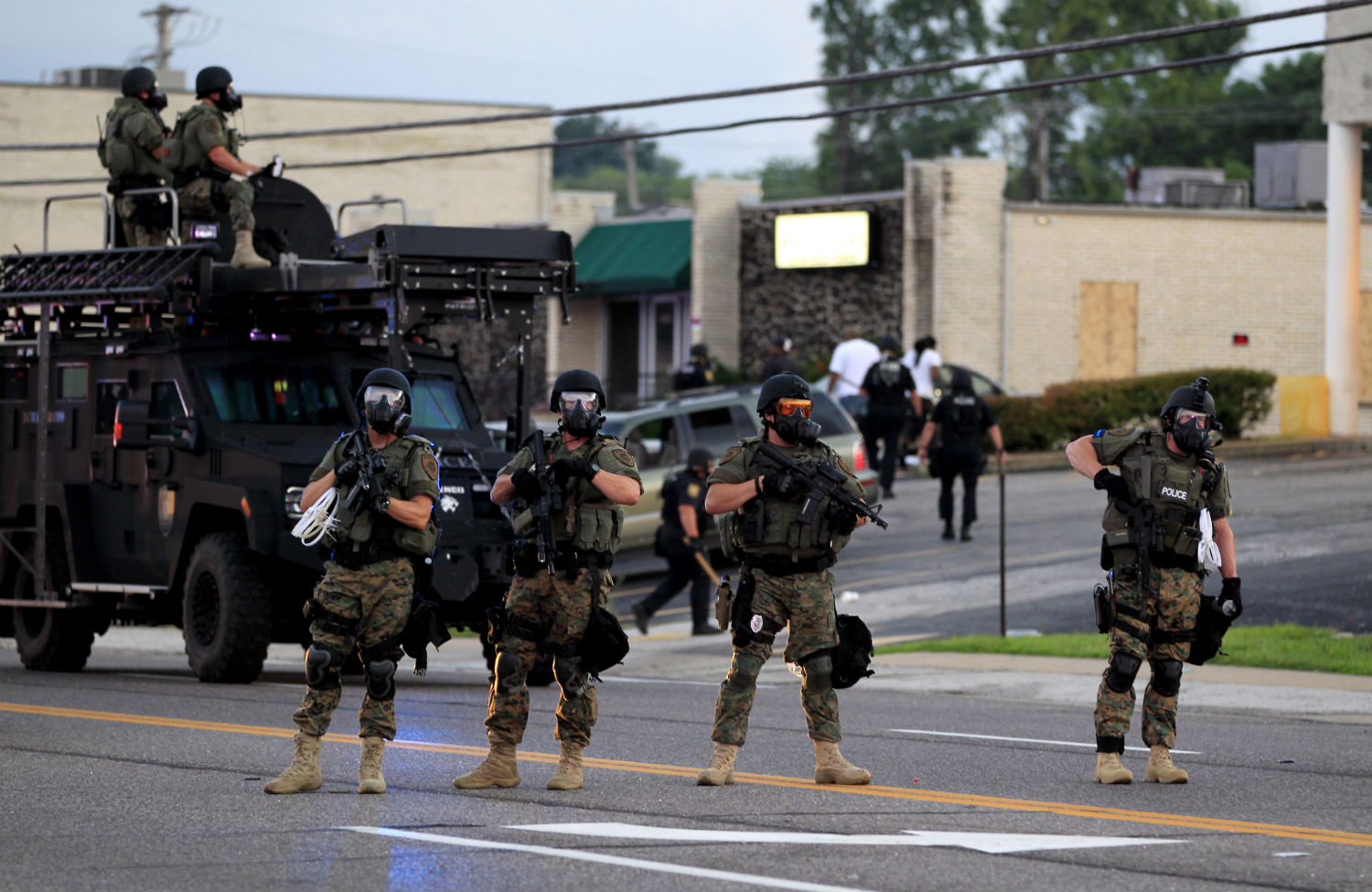It’s not just Ferguson—here’s how the system protects police.
How to police the police is a question as old as civilization, now given special urgency by a St. Louis County grand jury’s return of a “no bill” of indictment for Ferguson, Missouri, police officer Darren Wilson in his fatal shooting of an unarmed teenager, Michael Brown. The result is shocking to many, depressingly predictable to more than a few.
Can the cops be controlled? It’s never been easy: according to one old sociological chestnut, the monopoly on the legitimate use of violence is what defines modern government, and this monopoly is jealously protected against the second-guessing of puny civilians. All over the country, the issue of restraining police power is framed around the retribution against individual cops, from Staten Island to Milwaukee to Los Angeles. But is this the best way to impose discipline on law enforcement and roll back what even Republican appellate court appointees are calling rampant criminalization?
Police shootings in America
First, the big picture. Last year, the FBI tallied 461 “justifiable homicides” committed by law enforcement—justifiable because the Bureau assumes so, and the nation’s courts have not found otherwise. This is the highest number in two decades, even as the nation’s overall homicide rate continues to drop. Homicides committed by on-duty law enforcement make up 3 percent of the 14,196 homicides committed in the United States in 2013. A USA Today analysis of the FBI database found an average of about ninety-six police homicides a year in which a white officer kills a black person.
The FBI’s police homicide stats are fuzzy, and they are surely an undercount, given that they come from voluntary reports to the FBI from police departments all over the country. That the federal government does not keep a strict national tally shows just how seriously it takes this problem. A crowdsourced database has sprung up to fill the gap, as has a wiki-tabulation.
Perhaps the most disturbing thing about these police killings, many of them of unarmed victims, is that our courts find them perfectly legal.
SCOTUS and the license to kill
Chapter 563 of the Missouri Revised Statutes grants a lot of discretion to officers of the law to wield deadly force, to the horror of many observers swooping in to the Ferguson story. The statute authorizes deadly force “in effecting an arrest or in preventing an escape from custody” if the officer “reasonably believes” it is necessary in order to “to effect the arrest and also reasonably believes that the person to be arrested has committed or attempted to commit a felony…or may otherwise endanger life or inflict serious physical injury unless arrested without delay.”
But this law is not an outlier, and is fully in sync with Supreme Court jurisprudence. The legal standard authorizing deadly force is something called “objective reasonableness.”
This standard originates in the 1985 case of Tennessee v. Garner, which appeared at first to tighten restrictions on the police use of deadly force. The case involved a Memphis cop, Elton Hymon, who shot dead one Edward Garner: 15 years old, black and unarmed. Garner had just burgled a house, grabbing a ring and ten bucks. The US Supreme Court ruled that a police officer, henceforth, could use deadly force only if he “has probable cause to believe that the suspect poses a significant threat of death or serious physical injury to the officer or others.” The ruling required that the use of force be “objectively reasonable.” How this reasonableness should be determined was established in a 1989 case, Graham v. Connor: severity of the crime, whether the suspect is resisting or trying to escape and above all, whether the suspect posed an immediate threat to the safety of officers or others. All this appeared to restrict police violence—even if, in the end, Officer Hymon was never criminally charged for fatally shooting Edward Garner.
“Objectively reasonable”—what could be wrong with that? But in actual courtroom practice, “objective reasonableness” has become nearly impossible to tell apart from the subjective snap judgments of panic-fueled police officers. American courts universally defer to the law enforcement officer’s own personal assessment of the threat at the time.
The Graham analysis essentially prohibits any second-guessing of the officer’s decision to use deadly force: no hindsight is permitted, and wide latitude is granted to the officer’s account of the situation, even if scientific evidence proves it to be mistaken. Such was the case of Berkeley, Missouri, police officers Robert Piekutowski and Keith Kierzkowski, who in 2000 fatally shot Earl Murray and Ronald Beasley out of fear that the victims’ car was rolling
towards them. Forensic investigations established that the car had not in fact lurched towards the officers at the time of the shooting—but this was still not enough for the St. Louis County grand jury to indict the two cops of anything.
Not surprisingly then, legal experts find that “there is built-in leeway for police, and the very breadth of this leeway is why criminal charges against police are so rare,” says Walter Katz, a police oversight lawyer who served on the Los Angeles County Office of Independent Review until it disbanded in July of this year. According to Erwin Chemerinsky, dean of the UC Irvine Law School, recent Supreme Court decisions are not a path towards justice but rather a series of obstacles to holding police accountable for civil rights violations.
An officer’s personal threat assessment is often bolstered by the fact that there are between 270 million and 310 million guns in the United States. Take a grand jury’s failure to indict the police officers who fatally shot John Crawford III, the black man holding a BB gun in a Walmart in Beavercreek, Ohio. In a country where shooting sprees are a regular occurrence, where guns are widely available at Walmart and where fake guns that look very similar to real guns are sold in the same store, the police officers’ fears were deemed reasonable enough for the grand jury to find no probable cause of criminal wrongdoing. That is how the Supreme Court police violence jurisprudence works, and it was firmly on the side of officer Sean Williams, just as it has now been found to be on Darren Wilson’s. Given the deference and latitude hardwired into the law, “there is just an underlying assumption that the officer did not engage in criminal activity,” says Katz.
The first step to controlling the police is to get rid of the fantasy, once and for all, that the law is on our side. The law is firmly on the side of police who open fire on unarmed civilians.



Comment